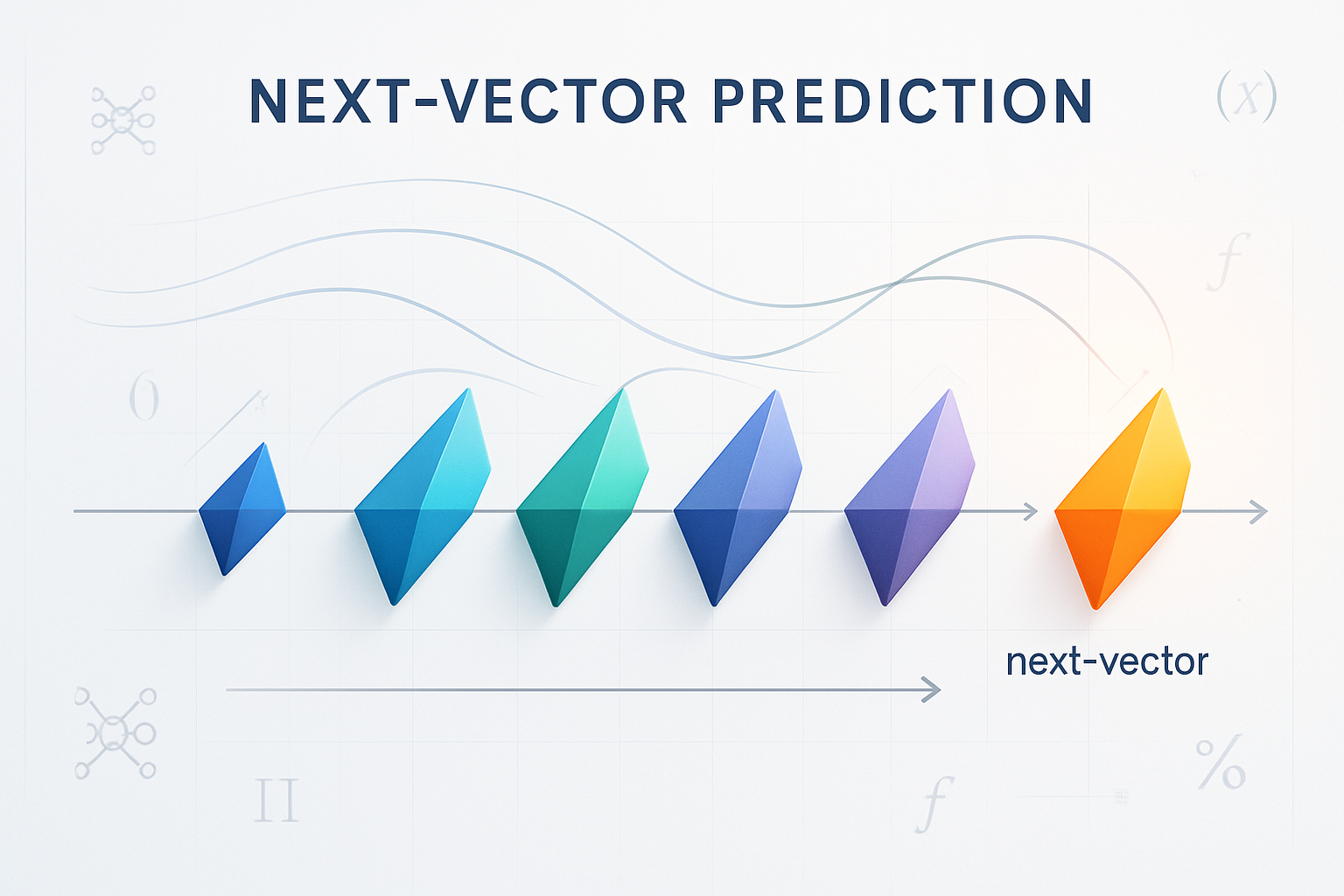TLDR
Qwen 3 Coder is Alibaba Cloud’s latest breakthrough in coding-focused large language models, engineered to excel in complex, agentic coding tasks with a unique blend of dense and Mixture-of-Experts architecture. With a robust open-source foundation under Apache 2.0, unprecedented context lengths (up to 131K tokens), and dual “thinking” modes to toggle between rapid responses and deep reasoning, Qwen 3 Coder positions itself as a formidable tool for developers, researchers, and enterprises alike.
It’s available on platforms such as Hugging Face, GitHub, and an official online playground, with extensive documentation, active community support, and real-world deployments showcasing its prowess in code generation, debugging, multilingual applications, and beyond. For additional details and hands-on experience, please explore the official Qwen blog, Hugging Face page, and the GitHub repository.

Introduction
In the ever-shifting landscape of artificial intelligence and large language models, a new contender has emerged, promising to revolutionize the way we approach coding assistance and automated software development. Qwen 3 Coder, the latest release from Alibaba Cloud’s Qwen series, introduces a paradigm that marries unprecedented scale, nuanced reasoning ability, and a pragmatic focus on the real-world challenges of code generation and debugging.
Crafted to handle immense context lengths and seamlessly transition between rapid-fire responses and multi-step reasoning sequences, the model is engineered for both breadth and depth. This article explores every available facet of Qwen 3 Coder—from where and how to access it, through its advanced technical underpinnings, to its performance benchmarks and transformative real-world applications.
What is Qwen 3 Coder?
Qwen 3 Coder represents the cutting edge of coding-focused large language models, meticulously designed to address the unique demands of modern software engineering. Developed by the visionary team at Alibaba Cloud, this model stands out by combining dense neural network methods with the innovative Mixture-of-Experts (MoE) architecture, enabling it to selectively activate sub-networks tailored for specialized tasks.
The dual-mode operation—“thinking” versus “non-thinking”—provides developers with the flexibility to choose either deep, step-by-step reasoning for complex problem solving or rapid responses for simpler queries. This enhancement not only optimizes computational resources but also caters to scenarios that need an elevated level of logical scrutiny.
The model’s comprehensive training regime, which spans a corpus of over 36 trillion tokens and encompasses 119 languages and dialects, ensures a robust and versatile performance across coding, natural language processing, and multilingual translation tasks. With a native support for up to 32K tokens and the ability to extend to 131K tokens using cutting-edge scaling techniques like the YaRN method (Yet Another RoPE Network), Qwen 3 Coder is ideally suited for sprawling codebases, extended conversations, and even technical documentation.
Availability and How to Access
Qwen 3 Coder is freely available as open-source software under the Apache 2.0 license, which means that anyone—from hobbyist developers to enterprise researchers—can integrate it into their projects without facing crippling licensing restrictions. The model is hosted on widely recognized platforms:
- Hugging Face: Qwen 3 Coder can be directly accessed via Hugging Face’s model repository. Developers can experiment with various versions (from the compact Qwen3-0.6B to the flagship Qwen3-480B variant) by navigating to the Hugging Face Qwen page.
- GitHub: The official codebase, sample scripts, deployment guides, and additional resources are available on GitHub. Interested parties can clone the repository from the QwenLM GitHub page and get started with local experiments.
- Official Chat Playground: For those curious to test drive the model without any setup overhead, an online playground is provided at Qwen Chat. This interactive interface allows users to experience the conversation capabilities and coding assistance features firsthand.
- ModelScope and Other Integrations: Qwen 3 Coder integrates with ecosystem tools like SGLang and vLLM, offering seamless server deployment and API creation for scalable applications.
The simplicity of deploying Qwen 3 Coder is further enhanced by comprehensive documentation available on its official website. Whether you’re setting it up for rapid prototyping or integrating it into a full-scale production system, clear guides and API references make the process straightforward.

How to Use Qwen 3 Coder
Using Qwen 3 Coder in your projects is a breeze, given its straightforward integration with popular frameworks. For most developers working in Python, the Hugging Face Transformers library is the simplest gateway. An example snippet to load the model is:
pythonCopy Codefrom transformers import AutoModelForCausalLM, AutoTokenizer
model_name = "Qwen/Qwen3-Coder-480B-A35B-Instruct"
tokenizer = AutoTokenizer.from_pretrained(model_name)
model = AutoModelForCausalLM.from_pretrained(
model_name,
torch_dtype="auto",
device_map="auto"
)
prompt = "Write a Python function to compute the Fibonacci sequence iteratively."
input_ids = tokenizer(prompt, return_tensors="pt").input_ids
output_ids = model.generate(input_ids, max_new_tokens=150)
print(tokenizer.decode(output_ids[0], skip_special_tokens=True))
Developers can also experiment with advanced features like toggling between “thinking” and “non-thinking” modes. By appending commands into the prompt, the model can be induced to slow down and engage in step-by-step reasoning:
pythonCopy Codeprompt = "/think Write a function in JavaScript to reverse a string."
In addition to local deployment, Qwen 3 Coder’s integration with frameworks like vLLM and SGLang allows it to be scaled for handling substantial production workloads. For instance, using vLLM, one could serve the model via a lightweight API:
bashCopy Codevllm serve Qwen/Qwen3-Coder-480B-A35B --enable-reasoning --reasoning-parser deepseek_r1
For developers exploring an agentic mode—one that supports external tool-calling and workflow orchestration—the model’s comprehensive API documentation provides detailed guidelines and sample scripts for integrating third-party services. This ability to extend the model’s capabilities into agent networks opens up new horizons in automation, where the model not only generates code but can also trigger testing tools, debugging environments, or database queries.
Open Source, Licensing, and Commercial Considerations
Qwen 3 Coder is distributed under the Apache License 2.0, a license celebrated in the open-source community for its permissive nature and clear guidelines for both personal and commercial use. The license grants users the rights to:
• Utilize the code in proprietary or commercial applications without releasing derivative works under the same license.
• Modify and distribute source code as long as proper attribution is maintained and the license text is included.
• Receive an implied patent grant from contributors, preventing litigation when implementing the software in a broader ecosystem.
These terms encourage widespread adoption and foster collaboration, as developers can use Qwen 3 Coder in academic research, startup innovations, or large-scale enterprise applications without incurring significant licensing fees. There is no set pricing for access beyond potential infrastructure costs when deploying the model at scale, reinforcing its appeal to a diverse audience.
For more in-depth licensing details, refer to the Apache 2.0 License text.
Technical Specifications and Architectural Innovations
Qwen 3 Coder is a leap forward in technical design that aims to balance computational efficiency with enhanced reasoning capabilities.
Model Architectures and Parameter Variants
Qwen 3 Coder is offered in multiple configurations to meet the needs of a wide range of applications:
• Smaller Variants (0.6B – 4B): Ideal for edge devices, rapid prototyping, and lightweight tasks where speed is more critical than deep reasoning.
• Mid-Sized Variants (32B): Offer a balance between computational overhead and rich understanding, suitable for robust code generation in typical software development environments.
• Flagship Models (480B and above): Leverage a dual-mode architecture with a dense core and Mixture-of-Experts (MoE) submodules, selectively activating only a fraction of the full parameter count for efficiency. For instance, the Qwen3-Coder-480B-A35B-Instruct model activates 35 billion parameters, making it both resourceful and economical.
Extended Context Length
One standout feature of Qwen 3 Coder is its extended context length. Native support for 32K tokens is further bolstered by techniques like the YaRN method, scaling support to a veritable 131K tokens. This capability allows the model to handle entire codebases, in-depth documentation, or long multi-turn conversations while maintaining coherence and context—a true game-changer for developers working on comprehensive projects.
Training and Dataset Composition
Trained on a corpus that spans 36 trillion tokens with a heavy emphasis on coding, STEM topics, and multilingual literature, Qwen 3 Coder demonstrates an adaptive prowess in a myriad of real-world tasks. Its training data includes both curated datasets and synthetically generated code samples designed to reinforce logical reasoning and robust understanding of programming paradigms.
Innovative Dual Thinking Modes
A particularly unique aspect of Qwen 3 Coder is its dual operational modes:
• Thinking Mode: When activated (using commands such as “/think”), the model adopts a methodical approach, breaking down problems into smaller logical steps, a feature that proves invaluable for debugging and complex algorithm generation.
• Non-Thinking Mode: Optimized for rapid responses, this mode is ideal for everyday queries where speed is paramount.
This duality not only enhances flexibility but also allows users to better manage computational resources by choosing the appropriate mode for the task at hand.
Benchmarks and Performance Analysis
Qwen 3 Coder has been rigorously evaluated against industry-standard benchmarks and real-world coding challenges, consistently proving its mettle among its peers.
Standardized Code Generation Benchmarks
On the widely recognized HumanEval benchmark—which tests a model’s ability to translate natural language instructions into correct code—Qwen 3 Coder boasts accuracy rates in the 70-72% range. This performance is particularly noteworthy when compared to other open-source models, and in some cases, it rivals even proprietary systems. A similar trend is observed on benchmarks like LiveCodeBench and the BFCL dataset, where Qwen 3 Coder demonstrates robust reasoning capabilities and accurate code synthesis.
Comparative Studies with Leading Models
In direct comparisons with models such as GPT-4, Claude, and DeepSeek, Qwen 3 Coder excels in several key areas:
• While GPT-4’s reasoning prowess remains a high benchmark, Qwen 3 Coder offers a cost-effective, open-source alternative that is nearly as capable for many programming tasks.
• Claude is recognized for its conversational coding skills, yet Qwen 3 Coder’s dual thinking modes and extended context capabilities make it more versatile for handling extended codebases or multi-turn problem solving.
• DeepSeek, another strong contender in the AI coding arena, often requires significantly more computational resources. Qwen 3 Coder, through its MoE architecture, strikes a balance between resource efficiency and performance.
Real-World Case Studies
Several early adopters from the developer community have published case studies detailing how Qwen 3 Coder has been integrated into software development workflows:
• Startups working on rapid prototyping have leveraged Qwen 3 Coder to generate boilerplate code and automate routine debugging.
• Academic research groups have integrated the model into their pipelines for developing automated testing frameworks, harnessing its ability to understand and generate logical code flows.
• Moreover, enterprises have deployed the model in internal developer tools, showcasing its prowess in generating clean, maintainable code from high-level specifications. For instance, community posts on Hugging Face have highlighted scenarios where Qwen 3 Coder adeptly autocompletes complex functions, significantly reducing code review times.
These real-world applications underscore the model’s utility in diverse scenarios—from generating quick code snippets during hackathons to automating extensive regression testing in production environments.
Use Cases, Demos, and Real-World Applications
The true potential of Qwen 3 Coder is best appreciated through its practical use cases, demos, and the tangible impact it has had across various industries.
1. Coding Assistance and Debugging
Imagine a scenario where a developer is tasked with refactoring a legacy codebase bristling with technical debt. Using Qwen 3 Coder, the developer can prompt the model with natural language instructions or specific code comments, such as:
”/think Refactor the following Python function to improve readability and performance.”
Within seconds, the model not only suggests improved code constructs but also offers detailed explanations for its changes, enabling a more informed review process. Early user demos on the Qwen Chat Playground have showcased the model’s ability to intelligently detect code anomalies and recommend debugging strategies in real time.
2. Agentic Workflows and Tool Integration
One of the revolutionary aspects of Qwen 3 Coder is its capacity for agentic behavior. Through seamless integration with external tools, the model can function as an autonomous coding assistant that triggers testing frameworks or deployment scripts. For example, a developer might use an integrated agent workflow to automatically generate unit tests for new code by issuing a command like:
”/think Generate unit tests for the following module.”
In this context, Qwen 3 Coder acts as a bridge between raw code generation and automated QA pipelines, ensuring that code quality remains high even as development velocity accelerates. Several enterprise implementations have reported decreased integration times and improved bug-tracking efficiency thanks to these agentic capabilities.
3. Multilingual Code Generation and Localization
Qwen 3 Coder’s extensive training in over 119 languages makes it a prime candidate for projects that span international markets. Companies tasked with providing localized software versions can leverage the model to generate code and documentation in multiple languages, ensuring consistency and clarity across cultural contexts. For instance, a tech startup targeting Asian markets may prompt the model with:
”/think Translate the following code comments into Mandarin Chinese, ensuring technical accuracy.”
This multilingual functionality opens doors to global collaboration, where teams distributed across different regions can work together without the typical language barriers that complicate code maintenance and documentation.
4. Rapid Prototyping and Innovation
Within startup ecosystems, time is often of the essence. Qwen 3 Coder’s quick-response mode is ideally suited for rapid prototyping. Early adopter demos reveal scenarios in which a model is used during hackathons:
• Developers submit high-level project outlines and receive immediate code scaffolds and functional modules that kickstart further development.
• This iterative process not only accelerates internal development cycles but also fosters innovation and experimentation, as the risk associated with manual coding is significantly minimized.
5. Educational and Research Tools
In the academic realm, Qwen 3 Coder has been adopted as an educational resource to illustrate modern machine learning techniques. Professors and research groups employ the model to:
• Demonstrate the integration of AI in solving complex algorithmic problems.
• Offer students hands-on experiences with state-of-the-art LLMs through interactive coding sessions and comprehensive workshops.
Such applications provide a dynamic learning environment, where theoretical knowledge is immediately put into practice—a powerful tool for nurturing the next generation of AI researchers and software engineers.
6. Public Showcases and Community Demos
The ever-growing community around Qwen 3 Coder has produced a rich tapestry of demos and case studies shared in blog posts, discussion forums, and webinars. Developers frequently post their achievements and innovative solutions on platforms like Dev.to and Medium, detailing everything from creative code generation experiments to comprehensive integrations of Qwen 3 Coder in enterprise workflows. These public endeavors not only highlight the model’s versatility but also serve as valuable learning resources for newcomers eager to understand its practical utility.
Limitations and Areas for Improvement
While Qwen 3 Coder is among the most robust open-source coding assistants available, it is not without its challenges. Some users have noted that:
• In extremely complex multi-step reasoning scenarios, there are occasional lapses in inferential accuracy; however, the model’s dual-mode capabilities often mitigate this issue.
• Deployments on resource-constrained hardware may experience latency when processing near-maximum context lengths, necessitating careful resource planning for production environments.
Despite these limitations, the active Qwen community is continuously refining the model, addressing bugs, and exploring avenues to improve performance through iterative updates and documented community feedback.
Future Roadmap and Innovations
Looking ahead, the Qwen development team has hinted at several promising enhancements for future releases. Planned updates include:
• Improved fine-tuning on domain-specific codebases, especially for high-stakes environments like cybersecurity and financial systems, where precision is paramount.
• Enhanced integration capabilities with popular IDEs and continuous integration/continuous deployment (CI/CD) pipelines to seamlessly incorporate AI-driven coding assistance within established workflows.
• Further expansion of multilingual support, with targeted improvements for low-resource languages to better serve global developer communities.
The collaborative nature of the project under the Apache 2.0 license invites academic researchers, enterprises, and independent developers to contribute toward its evolution. This open and dynamic ecosystem ensures that Qwen 3 Coder will remain a vibrant and relevant tool as the demands of modern software development continue to evolve.
Conclusion
Qwen 3 Coder stands as a transformative force in the realm of coding-focused large language models. By uniting robust agentic capabilities, impressive extended context management, and a dynamic dual-mode system, it has set a new standard for both open-source and commercial code generation tools. Its accessible deployment across major platforms like Hugging Face, GitHub, and Qwen Chat, combined with an active and transparent community, positions it as an invaluable asset for developers, researchers, and enterprises worldwide.
From its origins in massive datasets and advanced neural architectures to its demonstrable success in real-world deployments, Qwen 3 Coder is not merely a tool—it is a catalyst for innovation in software engineering. Whether you’re an academic exploring the frontiers of AI, a startup seeking rapid prototyping solutions, or a multinational corporation looking for cost-efficient automation, Qwen 3 Coder offers a sophisticated yet practical solution that meets and often exceeds expectations.
For those eager to dive deeper, the journey begins at the primary resources: the official Qwen blog, the Hugging Face project page, and the GitHub repository. As the model’s ecosystem continues to expand, Qwen 3 Coder is poised to become a cornerstone in the next wave of AI-assisted development.
In a world where the pace of technological innovation never ceases, Qwen 3 Coder charts a course toward a future where intelligent coding assistants not only generate code but truly understand and augment human creativity. Embrace the revolution, explore the code, and join the community—your next breakthrough might just be one prompt away.











Comments 2